January – February 1990
21 members nominated by the relevant medical bodies were appointed by the Governor to be members of the Preparatory Committee.
LATEST:
LATEST:
About
the Academy
the Academy
The Hong Kong Academy of Medicine (The Academy) is an independent institution with statutory power to organise, monitor, assess and accredit all medical and dental specialist training. It has the responsibility to oversee the continuing medical education and continuous professional development to maintain the standard of specialists practising in Hong Kong.
Objectives of
the Academy
the Academy
- To promote the advancement of the art and science of medicine
- To foster the development of i. postgraduate medical education and continuing medical education; ii. the study and practice of medicine and its specialties; and iii. medical research
- To promote i. the integrity of the medical profession; ii. ethical conduct in the practice of medicine and its specialties; and iii. the improvement of the standards of such practice through training and programs approved by the Academy
- To promote the improvement of healthcare for Hong Kong citizens
- To foster a spirit of co-operation among medical practitioners
- To facilitate the exchange of information and ideas in relation to all aspects of the art and science of medicine and matters connected with the medical professional co-operation among medical practitioners
PAST
PRESIDENTS
OUR PEOPLE
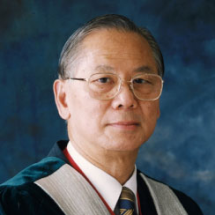
Prof. Sir David TODD
(1992 - 1996)
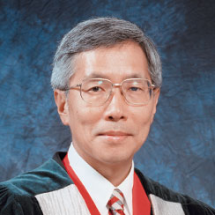
Dr. David FANG
(1996 - 2000)

Dr. LEONG Che-hung
(2000 - 2004)
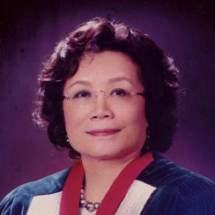
Prof. Grace W. K. TANG
(2004 - 2008)
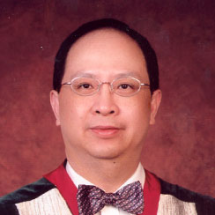
Prof. Raymond H. S. LIANG
(2008 - 2012)

Dr. Donald K. T. LI
(2012 - 2016)
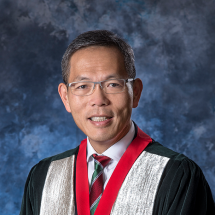
Prof. LAU Chak-sing
(2016 - 2020)
MEMBERS OF
THE ACADEMY
COUNCIL
OUR PEOPLE
OFFICERS
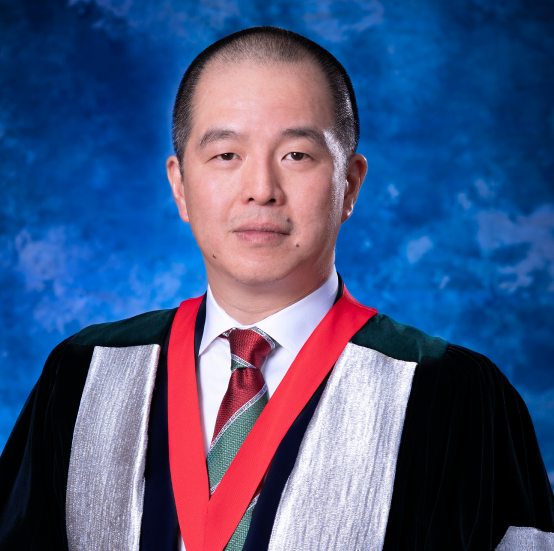
Prof. Gilberto Ka-kit LEUNG
President
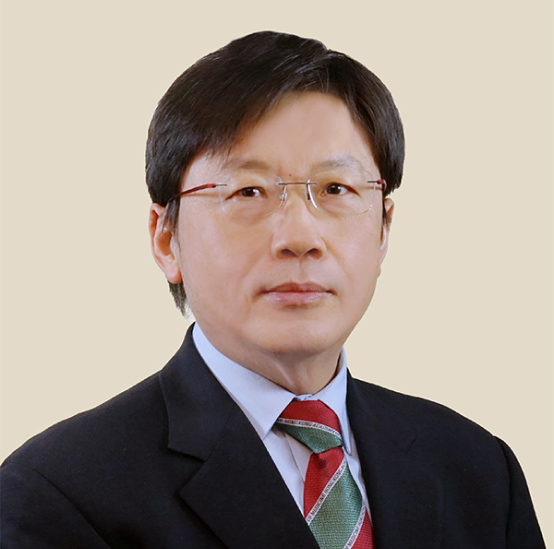
Dr. Yu-fat CHOW
Vice-President
(General Affairs)
(General Affairs)

Prof. Philip Kam-tao LI
Vice-President
(Education and Examinations)
(Education and Examinations)
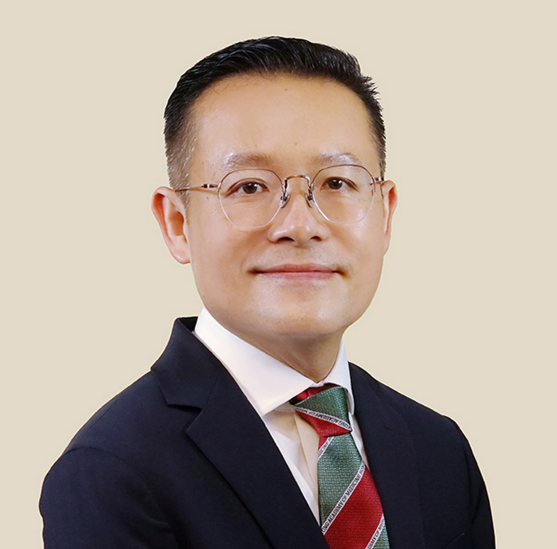
Dr. Wing-cheong LEUNG
Honorary Secretary
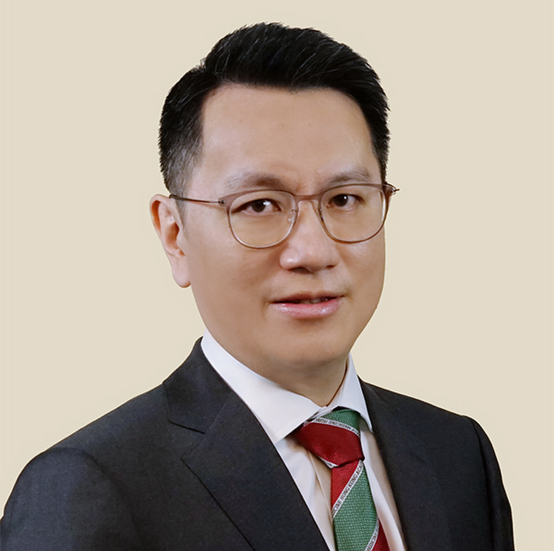
Prof. Eric Wai-choi TSE
Honorary Treasurer
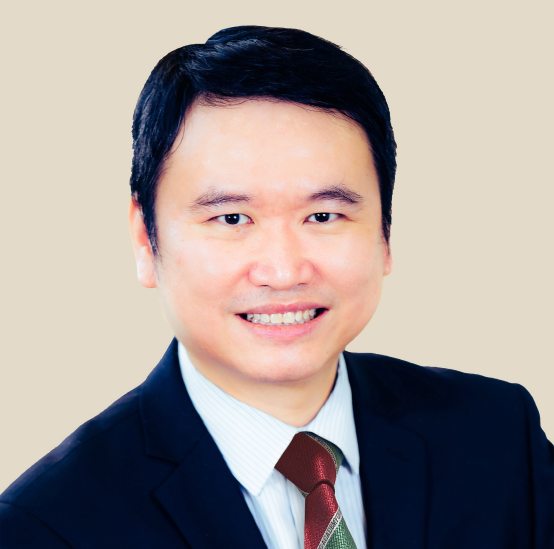
Prof. Martin Chi-sang WONG
Editor
EX OFFICIO MEMBERS (Presidents of 15 constituent Colleges)
Dr. Hing-yu SO
The Hong Kong College of Anaesthesiologists
Dr. Fei-chau PANG
Hong Kong College of Community Medicine
Dr. Simon Kam-yuen HO
The College of Dental Surgeons of Hong Kong
Dr. Clara Wing-yee WU
Hong Kong College of Emergency Medicine
Dr. David Vai-kiong CHAO
The Hong Kong College of Family Physicians
Dr. Karen Kar-loen CHAN
The Hong Kong College of Obstetricians and Gynaecologists
Prof. Clement Chee-yung THAM
The College of Ophthalmologists of Hong Kong
Dr. Sheung-wai LAW
The Hong Kong College of Orthopaedic Surgeons
Dr. Chi-man NGAI
The Hong Kong College of Otorhinolaryngologists
Prof. Simon Hung-san LAM
Hong Kong College of Paediatricians
Dr. Alexander Chak-lam CHAN
The Hong Kong College of Pathologists
Prof. Daniel Tak-mao CHAN
Hong Kong College of Physicians
Dr. Siu-ning CHIU
The Hong Kong College of Psychiatrists
Dr. Chun-key LAW
Hong Kong College of Radiologists
Prof. Kent-man CHU
The College of Surgeons of Hong Kong
Elected Members
Dr. Benny Chun-pong CHENG
Dr. Julian Chun-yan FONG
Dr. Hung-to LUK
Dr. Victor Wai-lun TANG
Dr. Sut-yee TSE
OUR HISTORY AND MILESTONE
1968
July 1968
The idea of introducing specialist registration in Hong Kong was first considered by the Medical Council of Hong Kong (MCHK).
The idea of introducing specialist registration in Hong Kong was first considered by the Medical Council of Hong Kong (MCHK).
1971
The United Kingdom Government accepted the recommendation of the Royal Commission on Medical Education that a system of specialist registration be introduced, and confirmed its intention to introduce the necessary legislation to enable the General Medical Council to maintain specialist registers.
1982
July 1982
Working Party on a specialist register for Hong Kong, which was formed by the MCHK in November 1979, concluded in its final report that the postgraduate training of doctors in Hong Kong was inadequate. The report also recommended that: “the professional training of doctors intending to specialise be improved as a necessary step towards the setting up of a specialist register.”
Working Party on a specialist register for Hong Kong, which was formed by the MCHK in November 1979, concluded in its final report that the postgraduate training of doctors in Hong Kong was inadequate. The report also recommended that: “the professional training of doctors intending to specialise be improved as a necessary step towards the setting up of a specialist register.”
1986
October 1986
The Government established a Working Party on Postgraduate Medical Education and Training under the chairmanship of Dr. Keith Halnan.
The Government established a Working Party on Postgraduate Medical Education and Training under the chairmanship of Dr. Keith Halnan.
OUR HISTORY AND MILESTONE
1988
October 1988
The Working Party on Postgraduate Medical Education and Training produced and submitted a report with recommendations to the Government on 18 October 1988.The Report recommended that: ’there should be a “Hong Kong Academy of Medicine” composed of Fellows accredited after completion of approved training and prescribed examinations.’
The Working Party on Postgraduate Medical Education and Training produced and submitted a report with recommendations to the Government on 18 October 1988.The Report recommended that: ’there should be a “Hong Kong Academy of Medicine” composed of Fellows accredited after completion of approved training and prescribed examinations.’
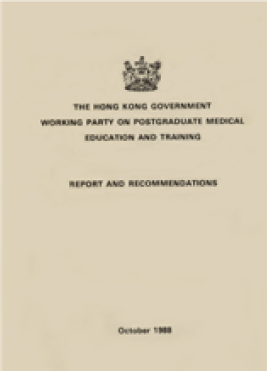
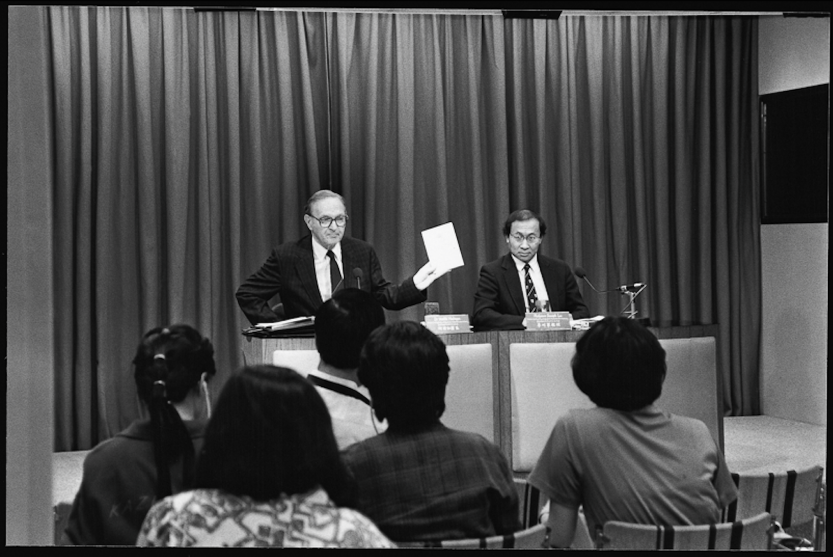
1989
September 1989
On 26 September 1989, on the advice of the Executive Council, the Governor ordered that approval in principle be given to proceed with the establishment of a Hong Kong Academy of Medicine (Academy).
October 1989
On 13 October 1989, approval was given by the Governor for the appointment of Prof. Sir David Todd as Chairman of the Preparatory Committee.
On 26 September 1989, on the advice of the Executive Council, the Governor ordered that approval in principle be given to proceed with the establishment of a Hong Kong Academy of Medicine (Academy).
October 1989
On 13 October 1989, approval was given by the Governor for the appointment of Prof. Sir David Todd as Chairman of the Preparatory Committee.
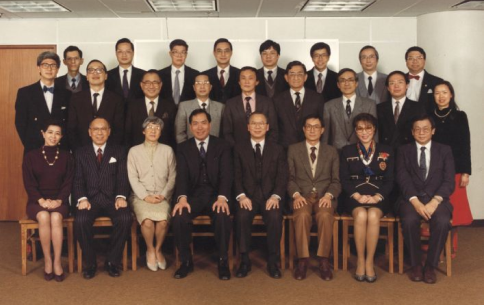
1990
April 1990
Finance & Administrative Subcommittee (FASC) noted its terms of reference, which included finding suitable temporary and/or permanent accommodation for the Academy. FASC proposed to raise funds for both capital and recurrent expenses, and discussed formation of a Foundation Fund.
Finance & Administrative Subcommittee (FASC) noted its terms of reference, which included finding suitable temporary and/or permanent accommodation for the Academy. FASC proposed to raise funds for both capital and recurrent expenses, and discussed formation of a Foundation Fund.
1991
June 1991
On 6 June 1991, the Hong Kong Academy of Medicine Foundation Fund (HKAMFF), appointed by the Preparatory Committee, was incorporated under the Companies Ordinance as a tax-exempt charitable organisation. It was established for the purpose of raising funds for the formation and administration of the Academy.
December 1991
The Preparatory Committee completed the draft legislation of the HKAM Ordinance (Cap. 419).
On 6 June 1991, the Hong Kong Academy of Medicine Foundation Fund (HKAMFF), appointed by the Preparatory Committee, was incorporated under the Companies Ordinance as a tax-exempt charitable organisation. It was established for the purpose of raising funds for the formation and administration of the Academy.
December 1991
The Preparatory Committee completed the draft legislation of the HKAM Ordinance (Cap. 419).
1992
March 1992
“The Fighting Bride”, a Cantonese opera sung in English, was the big hit of March 1992 and succeeded in raising the very respectable sum of nearly $1.358M for the HKAMFF.
March 1992
The Preparatory Committee had its last meeting on 26 March 1992 and confirmed the final design of the Academy emblem.
The emblem adopted consists of an oval ground containing an upright staff with a serpent intertwined (the traditional symbol of the medical profession); an open book (symbolising medical knowledge, and on whose pages the four characters of the Chinese motto written by the late Madam Fang Zhaoling appear); a bauhinia blossom (representing Hong Kong at that time and in the post-1997 era); concentric coloured rings of increasing diameter (symbolising ever-increasing medical knowledge and ever-flourishing medical enlightenment); and a ribbon on which the Latin motto is inscribed.
“The Fighting Bride”, a Cantonese opera sung in English, was the big hit of March 1992 and succeeded in raising the very respectable sum of nearly $1.358M for the HKAMFF.
March 1992
The Preparatory Committee had its last meeting on 26 March 1992 and confirmed the final design of the Academy emblem.
The emblem adopted consists of an oval ground containing an upright staff with a serpent intertwined (the traditional symbol of the medical profession); an open book (symbolising medical knowledge, and on whose pages the four characters of the Chinese motto written by the late Madam Fang Zhaoling appear); a bauhinia blossom (representing Hong Kong at that time and in the post-1997 era); concentric coloured rings of increasing diameter (symbolising ever-increasing medical knowledge and ever-flourishing medical enlightenment); and a ribbon on which the Latin motto is inscribed.

May 1992
Another major event was the “Walk for the Academy – Walk for Health”, which took place on 30 May 1992 along a trail in the Tai Tam Country Park. The walk was started by the then Chief Secretary Sir David Ford and successfully raised over $1.368M.
Another major event was the “Walk for the Academy – Walk for Health”, which took place on 30 May 1992 along a trail in the Tai Tam Country Park. The walk was started by the then Chief Secretary Sir David Ford and successfully raised over $1.368M.

June 1992
On 25 June 1992, the Hong Kong Academy of Medicine Ordinance (Cap. 419) was enacted by the Legislative Council.
On 25 June 1992, the Hong Kong Academy of Medicine Ordinance (Cap. 419) was enacted by the Legislative Council.
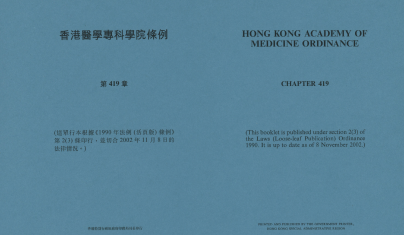
August 1992
The Hong Kong Academy of Medicine Ordinance (Cap. 419) came into effect on 1 August 1992. An Interim Council was formally established, comprising six Officers and the Presidents of 12 designated Academy Colleges.
The Hong Kong Academy of Medicine Ordinance (Cap. 419) came into effect on 1 August 1992. An Interim Council was formally established, comprising six Officers and the Presidents of 12 designated Academy Colleges.

The Interim Council formally admitted 12 Academy Colleges:
- The Hong Kong College of Anaesthesiologists
- The Hong Kong College of Community Medicine
- The College of Dental Surgeons of Hong Kong
- The Hong Kong College of General Practitioners (subsequently renamed as The Hong Kong College of Family Physicians)
- The Hong Kong College of Obstetricians & Gynaecologists
- The Hong Kong College of Orthopaedic Surgeons
- The Hong Kong College of Paediatricians
- The Hong Kong College of Pathologists
- The Hong Kong College of Physicians
- The Hong Kong College of Psychiatrists
- The Hong Kong College of Radiologists
- The College of Surgeons of Hong Kong
Two Faculties, namely Ophthalmologists and Otorhinolaryngologists, were also admitted under the College of Surgeons of Hong Kong by the Interim Council.
September 1992
The Interim Council held its first meeting on 3 September 1992.
September 1992
The Interim Council held its first meeting on 3 September 1992.
1993
January 1993
The Academy was finally notified on 15 January 1993 that the Department of Health would offer a site in Wong Chuk Hang to the Academy after much difficulty in finding a suitable site.
The Secretary for Health & Welfare wrote to the Hong Kong Jockey Club (HKJC) to solicit funding support for the construction of the Academy’s permanent headquarters, and indicated that the Government had already committed to assist the Academy with a grant of up to $10M towards construction and operation costs for its headquarters.
The Academy was finally notified on 15 January 1993 that the Department of Health would offer a site in Wong Chuk Hang to the Academy after much difficulty in finding a suitable site.
The Secretary for Health & Welfare wrote to the Hong Kong Jockey Club (HKJC) to solicit funding support for the construction of the Academy’s permanent headquarters, and indicated that the Government had already committed to assist the Academy with a grant of up to $10M towards construction and operation costs for its headquarters.
May 1993
Hospital Authority agreed to provide two to three floors at Pamela Youde Nethersole Eastern Hospital (PYNEH) to the Academy as a temporary office, at a token rent of $1 per annum.
Hospital Authority agreed to provide two to three floors at Pamela Youde Nethersole Eastern Hospital (PYNEH) to the Academy as a temporary office, at a token rent of $1 per annum.
September 1993
The Academy Secretariat moved into its temporary headquarters at Multicentre Block A of the PYNEH.
The Academy Secretariat moved into its temporary headquarters at Multicentre Block A of the PYNEH.

October 1993
On 20 October 1993, the HKJC Charities Trust confirmed a grant of $165M on consideration that the building would be named after the HKJC.
December 1993
The Academy’s inaugural ceremony was held on 9 December 1993 and was officiated by the Governor, the Rt. Hon. Mr. Christopher Patten. The ceremony was attended by over 167 overseas dignitaries during which over 2,000 Fellows were admitted according to the admission criteria set by the Interim Council.
On 20 October 1993, the HKJC Charities Trust confirmed a grant of $165M on consideration that the building would be named after the HKJC.
December 1993
The Academy’s inaugural ceremony was held on 9 December 1993 and was officiated by the Governor, the Rt. Hon. Mr. Christopher Patten. The ceremony was attended by over 167 overseas dignitaries during which over 2,000 Fellows were admitted according to the admission criteria set by the Interim Council.

1994
January 1994
Building on the success of “The Fighting Bride”, a more ambitious project in conjunction with the Kwan Fong Charitable Foundation was staged. The joint fund-raising opera was held on 6-7 January 1994 at the Cultural Centre and raised $12M.
Building on the success of “The Fighting Bride”, a more ambitious project in conjunction with the Kwan Fong Charitable Foundation was staged. The joint fund-raising opera was held on 6-7 January 1994 at the Cultural Centre and raised $12M.

February 1994
On 22 February 1994, the Executive Council approved additional government commitment, including a free land grant for the building of the Academy in Wong Chuk Hang.
July 1994
The interim period officially ended on 19 July 1994 when the first Annual General Meeting was held and Prof. Sir David Todd was elected the first President of the Academy. The meeting was held in conjunction with the first Academy’s Fellowship Conferment Ceremony.
On 22 February 1994, the Executive Council approved additional government commitment, including a free land grant for the building of the Academy in Wong Chuk Hang.
July 1994
The interim period officially ended on 19 July 1994 when the first Annual General Meeting was held and Prof. Sir David Todd was elected the first President of the Academy. The meeting was held in conjunction with the first Academy’s Fellowship Conferment Ceremony.

1995
March 1995
On 23 March 1995, the land grant was formally executed. The Academy took over the site in Wong Chuk Hang.
On 23 March 1995, the land grant was formally executed. The Academy took over the site in Wong Chuk Hang.
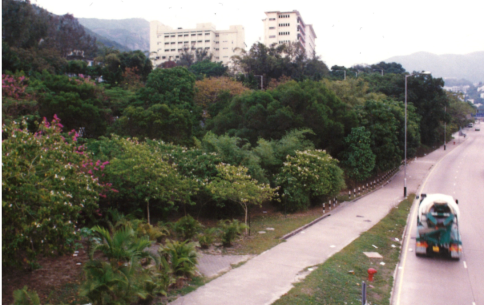
March 1995
The Hong Kong Medical Journal, a joint publication of the Academy and the Hong Kong Medical Association, was published as a quarterly journal. Since 2002, it has become a bi-monthly publication.
The Hong Kong Medical Journal, a joint publication of the Academy and the Hong Kong Medical Association, was published as a quarterly journal. Since 2002, it has become a bi-monthly publication.

May 1995
The Academy Council approved the formation of a Joint Building and Finance Committee to monitor the building project until its completion.
The Academy Council approved the formation of a Joint Building and Finance Committee to monitor the building project until its completion.
October 1995
On 2 October 1995, the Academy admitted another two new Academy Colleges, namely the College of Ophthalmologists of Hong Kong and the Hong Kong College of Otorhinolaryngologists.
On 2 October 1995, the Academy admitted another two new Academy Colleges, namely the College of Ophthalmologists of Hong Kong and the Hong Kong College of Otorhinolaryngologists.
November 1995
The Academy Council formally approved the design and budget of its headquarters.
The Academy Council formally approved the design and budget of its headquarters.

1996
April 1996
The first mandatory Continuing Medical Education (CME) cycle commenced in April 1996 and, by July 1997, all colleges had begun their CME cycles.
June 1996
A roast pig cutting ceremony was held at the construction site of the Academy’s headquarters.
The first mandatory Continuing Medical Education (CME) cycle commenced in April 1996 and, by July 1997, all colleges had begun their CME cycles.
June 1996
A roast pig cutting ceremony was held at the construction site of the Academy’s headquarters.

1997
January 1997
On 16 January 1997, the Academy admitted another new Academy College, The Hong Kong College of Emergency Medicine, increasing the total number of Academy Colleges to 15.
On 16 January 1997, the Academy admitted another new Academy College, The Hong Kong College of Emergency Medicine, increasing the total number of Academy Colleges to 15.
1998
June 1998
The Occupation Permit (OP) of the Academy’s headquarters was issued by the Buildings Department on 2 June 1998.
October 1998
On 1 October 1998, Bylaw 16 was rescinded, following the Academy Council’s earlier decision that in due course when the exit examinations were in place, all doctors must pass such an assessment before they could become Fellows of the Academy.
October 1998
Construction works of the Academy’s headquarters were completed on 1 October 1998. The Academy and Colleges secretariats moved in.
The Occupation Permit (OP) of the Academy’s headquarters was issued by the Buildings Department on 2 June 1998.
October 1998
On 1 October 1998, Bylaw 16 was rescinded, following the Academy Council’s earlier decision that in due course when the exit examinations were in place, all doctors must pass such an assessment before they could become Fellows of the Academy.
October 1998
Construction works of the Academy’s headquarters were completed on 1 October 1998. The Academy and Colleges secretariats moved in.
May 1997
The Academy’s Foundation Stone Laying Ceremony was held on 20 May 1997 and officiated by the Academy’s President, Prof. Sir David Todd and the then Chairman of the HKJC, Mr. Wong Chung-hin.
The Academy’s Foundation Stone Laying Ceremony was held on 20 May 1997 and officiated by the Academy’s President, Prof. Sir David Todd and the then Chairman of the HKJC, Mr. Wong Chung-hin.

November 1998
The opening of the Academy’s headquarters was officiated by the then Chief Executive of the Hong Kong Special Administrative Region, the Hon. Tung Chee-hwa on 26 November 1998. The Academy also held its first International Congress on the same day.
The opening of the Academy’s headquarters was officiated by the then Chief Executive of the Hong Kong Special Administrative Region, the Hon. Tung Chee-hwa on 26 November 1998. The Academy also held its first International Congress on the same day.

2000
April 2000
The Hong Kong Academy of Medicine Jockey Club Building was awarded the 1999 Certificate of Merit by the Hong Kong Institute of Architects.
The Hong Kong Academy of Medicine Jockey Club Building was awarded the 1999 Certificate of Merit by the Hong Kong Institute of Architects.

2004
October 2004
On 8 October 2004, the Academy signed an Memorandum of Understanding (MOU) with the Department of Health of the Macao SAR Government to provide assistance in accreditation assessment for specialists.
On 8 October 2004, the Academy signed an Memorandum of Understanding (MOU) with the Department of Health of the Macao SAR Government to provide assistance in accreditation assessment for specialists.

2005
April 2005
A 18-person delegation of the Academy visited Beijing in April 2005. Besides attending the 90th Anniversary and the 23rd National Representative Meeting of the Chinese Medical Association, the delegation had meetings with the Vice Chairman of the Standing Committee of National People’s Congress, the Ministry of Health, Hong Kong and Macao Affairs Office of the State Council, Chinese Academy of Engineering, Chinese Academy of Sciences, Chinese Academy of Medical Sciences & Peking Union Medical College, Peking Union Medical College Hospital, Beijing United Family Hospital & Clinics, and the Association of Medical Universities & Colleges in China. The Academy delegation had fruitful discussion and exchanged views with these organisations on various topics including specialist registration system, exchange programmes on training and CME.
A 18-person delegation of the Academy visited Beijing in April 2005. Besides attending the 90th Anniversary and the 23rd National Representative Meeting of the Chinese Medical Association, the delegation had meetings with the Vice Chairman of the Standing Committee of National People’s Congress, the Ministry of Health, Hong Kong and Macao Affairs Office of the State Council, Chinese Academy of Engineering, Chinese Academy of Sciences, Chinese Academy of Medical Sciences & Peking Union Medical College, Peking Union Medical College Hospital, Beijing United Family Hospital & Clinics, and the Association of Medical Universities & Colleges in China. The Academy delegation had fruitful discussion and exchanged views with these organisations on various topics including specialist registration system, exchange programmes on training and CME.

2006
April 2006
On 14 April 2006, the Academy signed an MOU with the Ministry of Health for collaboration on specialist training, accreditation and registration in the Mainland.
On 14 April 2006, the Academy signed an MOU with the Ministry of Health for collaboration on specialist training, accreditation and registration in the Mainland.
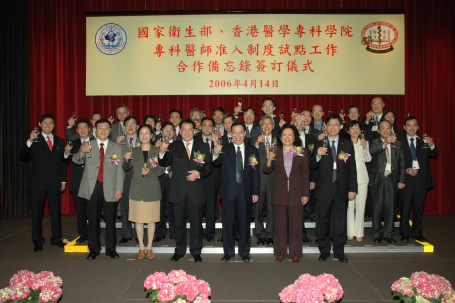
2007
December 2007
The Academy signed an MOU with the Royal Society of Medicine for reciprocal use of facilities by members of both organisations.
The Academy signed an MOU with the Royal Society of Medicine for reciprocal use of facilities by members of both organisations.
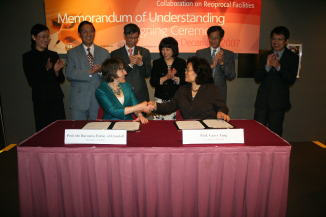
2009
March 2009
On 10 March 2009, the Academy (HKAM) signed an MOU with the Academy of Medicine of Malaysia (AMM) and the Academy of Medicine, Singapore (AMS), seeking to consolidate and strengthen links amongst the three academies in form and substance of the AMM-AMS-HKAM Tripartite Congress of Medicine. The Tripartite Congress would be held every 3 years, to be hosted by the three academies by rotation.
On 10 March 2009, the Academy (HKAM) signed an MOU with the Academy of Medicine of Malaysia (AMM) and the Academy of Medicine, Singapore (AMS), seeking to consolidate and strengthen links amongst the three academies in form and substance of the AMM-AMS-HKAM Tripartite Congress of Medicine. The Tripartite Congress would be held every 3 years, to be hosted by the three academies by rotation.

2010
November 2010
1st AMM-AMS-HKAM Tripartite Congress was inaugurated at the Academy on 12 November 2010.
1st AMM-AMS-HKAM Tripartite Congress was inaugurated at the Academy on 12 November 2010.
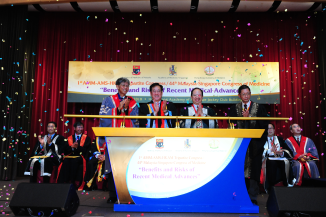
2013
July 2013
In July 2013, the Academy signed an agreement with the Center of Medical Simulation, seeking to promote patient safety, medical education and research using simulation in Hong Kong.
In July 2013, the Academy signed an agreement with the Center of Medical Simulation, seeking to promote patient safety, medical education and research using simulation in Hong Kong.

2014
August 2014
Another funded project of the Academy, the HKJC Disaster Preparedness and Response Institute was officially established on 20 August 2014.
Another funded project of the Academy, the HKJC Disaster Preparedness and Response Institute was officially established on 20 August 2014.
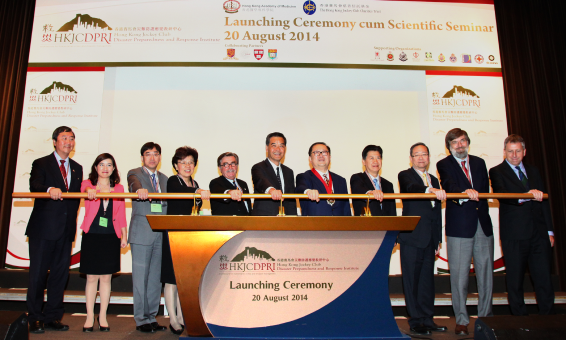
December 2013
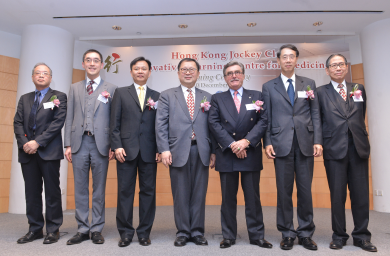
The Academy’s funded project, the HKJC Innovative Learning Centre for Medicine, was officially opened on 10 December 2013.
August 2014
Another funded project of the Academy, the HKJC Disaster Preparedness and Response Institute was officially established on 20 August 2014.
Another funded project of the Academy, the HKJC Disaster Preparedness and Response Institute was officially established on 20 August 2014.

2017
July 2017
The Academy established the Young Fellows Chapter (YFC) in July 2017 with representatives from 15 Academy Colleges, who have obtained Academy Fellowship within the past 10 years. The aim of YFC is to nurture future healthcare leaders by involving young Fellows in various activities and affairs of the Academy for them to better understand the organisation’s objectives and work.
The Academy established the Young Fellows Chapter (YFC) in July 2017 with representatives from 15 Academy Colleges, who have obtained Academy Fellowship within the past 10 years. The aim of YFC is to nurture future healthcare leaders by involving young Fellows in various activities and affairs of the Academy for them to better understand the organisation’s objectives and work.
2015
October 2015
On 31 October 2015, the Academy renewed the MOU with National Health and Family Planning Commission to extend and continue the collaboration in training of general practitioners and medical specialists for the establishment of “Standardisation of General / Specialist Medical Training” in the Mainland.
On 31 October 2015, the Academy renewed the MOU with National Health and Family Planning Commission to extend and continue the collaboration in training of general practitioners and medical specialists for the establishment of “Standardisation of General / Specialist Medical Training” in the Mainland.
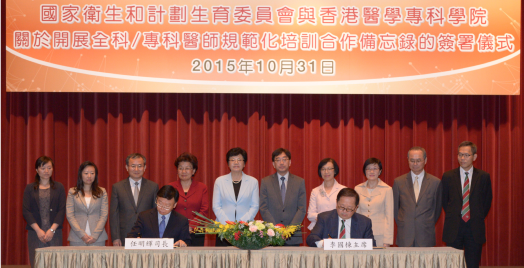
2018
June 2018
The Academy is designated as an Alliance Member of the Center for Medical Simulation (CMS). The signing ceremony was held on 20 June 2018 with the participation of the Academy’s Officers, Honorary Director of the HKJCILCM and CMS Faculty members.
The Academy is designated as an Alliance Member of the Center for Medical Simulation (CMS). The signing ceremony was held on 20 June 2018 with the participation of the Academy’s Officers, Honorary Director of the HKJCILCM and CMS Faculty members.
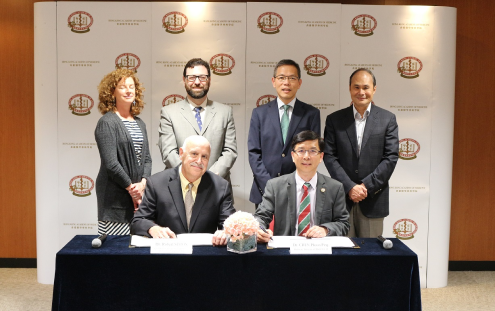
2019
March 2019
The establishment of the Professionalism and Ethics Committee was announced on 16 March 2019. It aims to further enhance the education and training on medical professionalism and ethical practice among Fellows and specialist trainees
July 2019
With support from the Shenzhen Municipal Health Commission, the SZ-HK Medical Specialist Training Centre was formally established by the Academy and Shenzhen Medical Doctor Association on 2 July 2019. Representatives of the Academy, Shenzhen Municipal People’s Government, Shenzhen Municipal Health Commission, Chinese Medical Doctor Association, Shenzhen Medical Doctor Association, HKU Li Ka Shing Faculty of Medicine and HKU-Shenzhen Hospital officiated the unveiling ceremony held in Shenzhen. Officers of the Academy as well as Presidents and representatives of Colleges also attended the ceremony.
The establishment of the Professionalism and Ethics Committee was announced on 16 March 2019. It aims to further enhance the education and training on medical professionalism and ethical practice among Fellows and specialist trainees
July 2019
With support from the Shenzhen Municipal Health Commission, the SZ-HK Medical Specialist Training Centre was formally established by the Academy and Shenzhen Medical Doctor Association on 2 July 2019. Representatives of the Academy, Shenzhen Municipal People’s Government, Shenzhen Municipal Health Commission, Chinese Medical Doctor Association, Shenzhen Medical Doctor Association, HKU Li Ka Shing Faculty of Medicine and HKU-Shenzhen Hospital officiated the unveiling ceremony held in Shenzhen. Officers of the Academy as well as Presidents and representatives of Colleges also attended the ceremony.
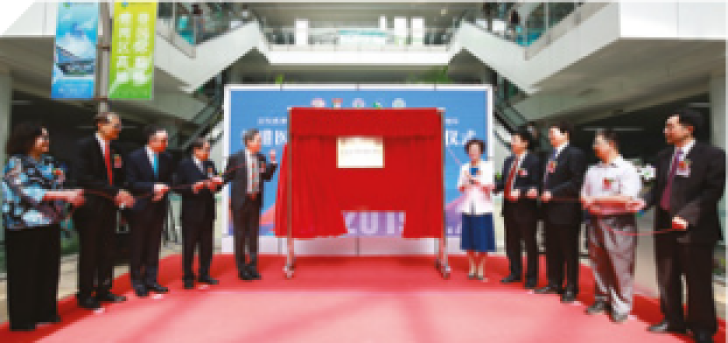
2020
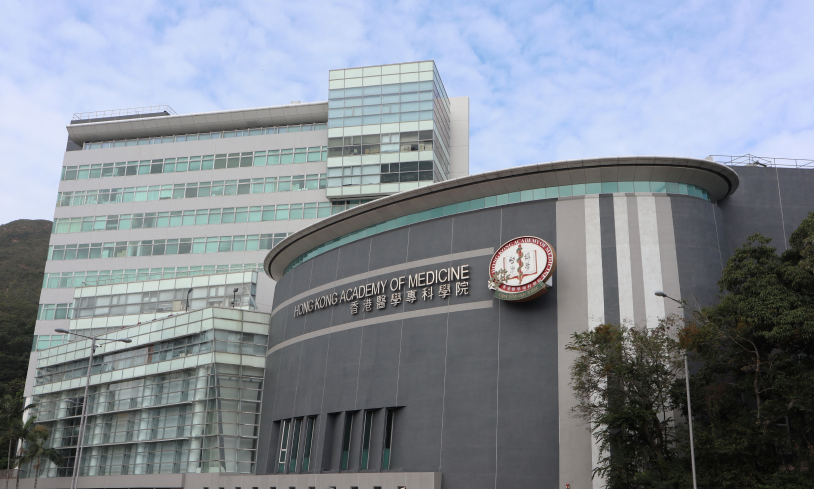
August 2020
The external wall refurbishment works with a new look of the Academy Building was completed in August 2020.
The external wall refurbishment works with a new look of the Academy Building was completed in August 2020.
2020-22
In the midst of the COVID-19 pandemic, the Academy established a "COVID-19 Corner" on the Academy website in April 2020 with an aim to build a resilient workforce encouraging mutual learning and support.
In the midst of the COVID-19 pandemic, the Academy established a "COVID-19 Corner" on the Academy website in April 2020 with an aim to build a resilient workforce encouraging mutual learning and support.
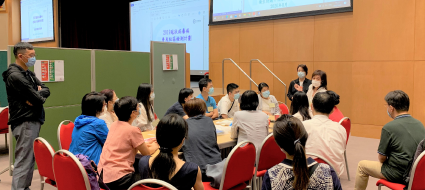
In support of the Government’s Universal Community Testing Programme taken place earlier in September 2020, the Academy had played an active role and coordinated training sessions for healthcare practitioners between 26 and 30 August 2020 at different locations. Around 1,800 healthcare practitioners were trained within the 5-day period.
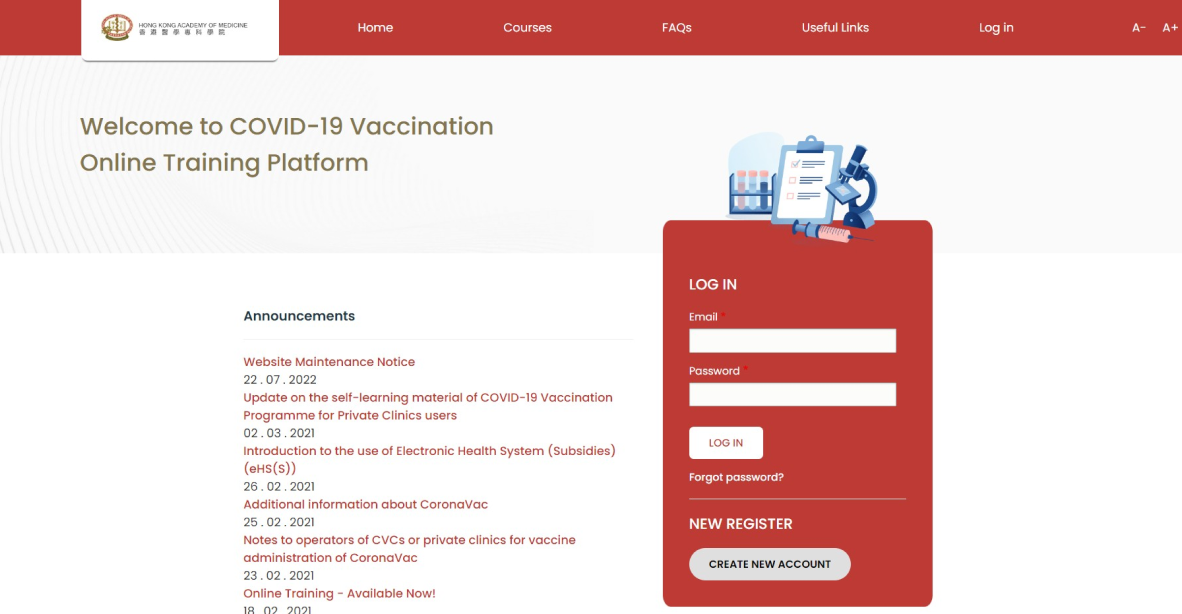
Further to the support and provision of training for the Government's Universal Community Testing Programme in September 2020, the Academy was commissioned by the Government again in early 2021 and helped establish an e-learning platform to provide online training to healthcare professionals working for the Government's COVID-19 Vaccination Programme. Over 12,000 healthcare professionals completed the online training.
2021
September 2021
The Academy promulgated in September 2021 a Well-being Charter committed to cultivating and promoting well-being of Academy Fellows and specialist trainees of Academy Colleges. A Task Force on Well-being has been set up to devise plans and effective promotion of doctors’ well-being initiatives.
The Academy promulgated in September 2021 a Well-being Charter committed to cultivating and promoting well-being of Academy Fellows and specialist trainees of Academy Colleges. A Task Force on Well-being has been set up to devise plans and effective promotion of doctors’ well-being initiatives.
2022
October 2022
In June 2021, the Academy formed a Task Force supported by a project team to kick off the works on the development of a Learning Management System (LMS), an online platform to provide e-Learning resources and virtual learning experience in response to the demand for new forms of education and training. The system was completed and implemented in October 2022.
In June 2021, the Academy formed a Task Force supported by a project team to kick off the works on the development of a Learning Management System (LMS), an online platform to provide e-Learning resources and virtual learning experience in response to the demand for new forms of education and training. The system was completed and implemented in October 2022.

